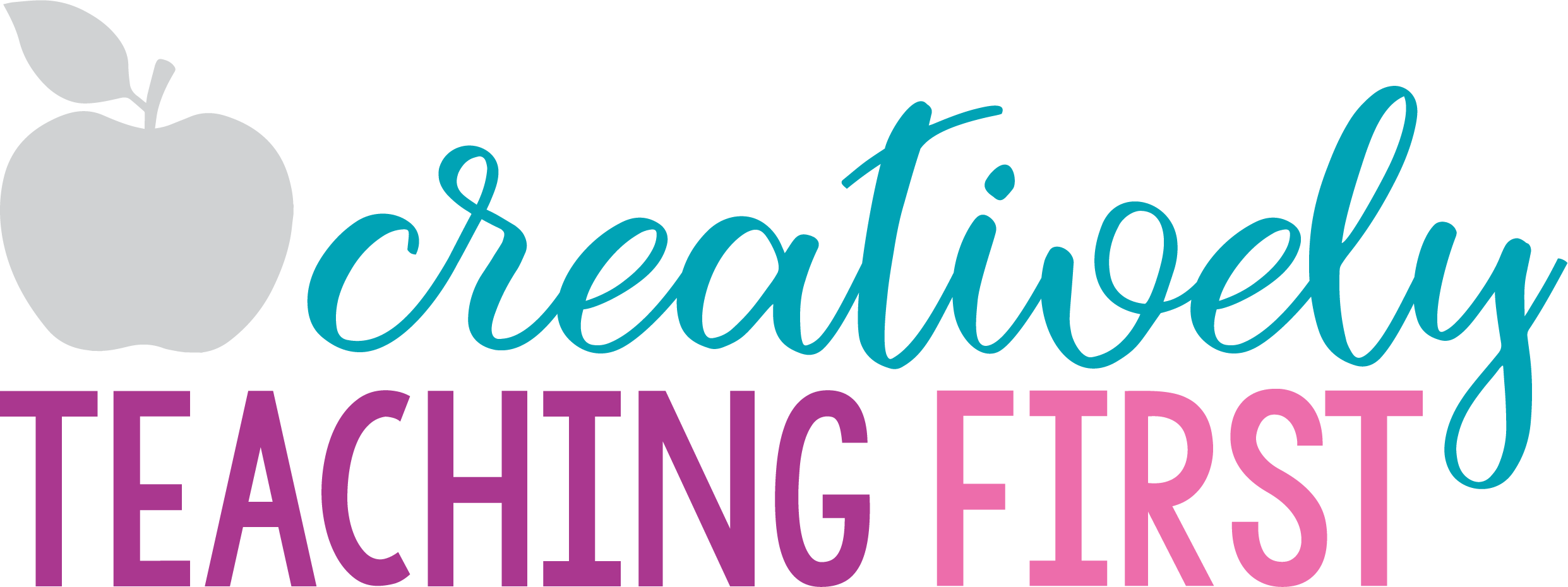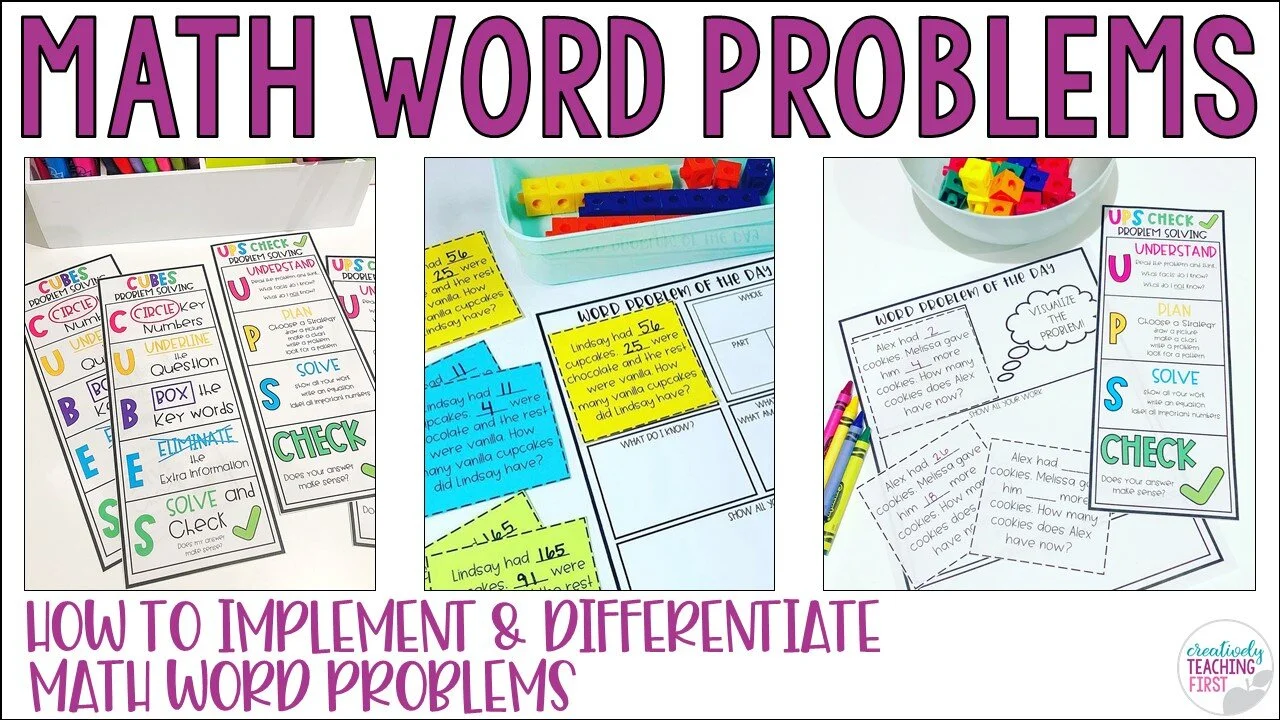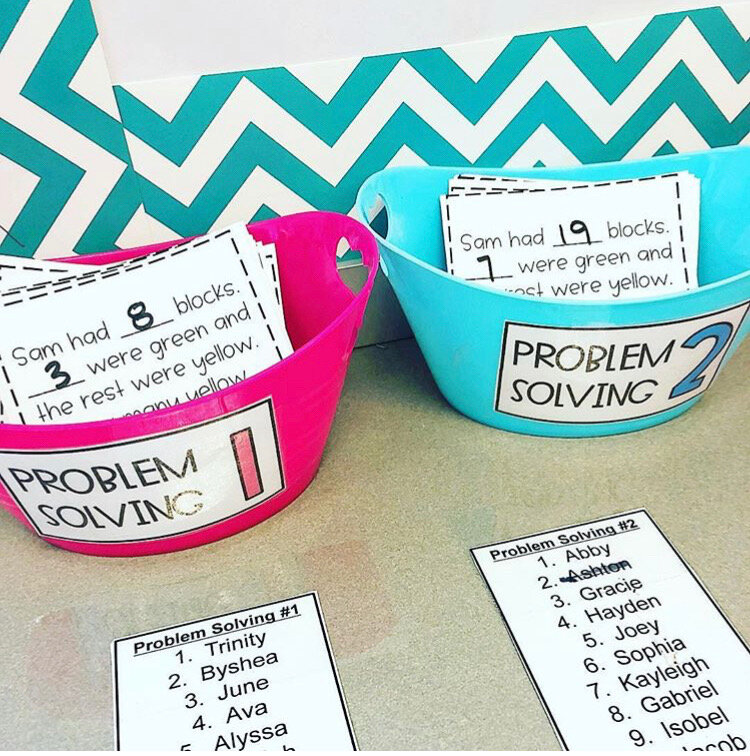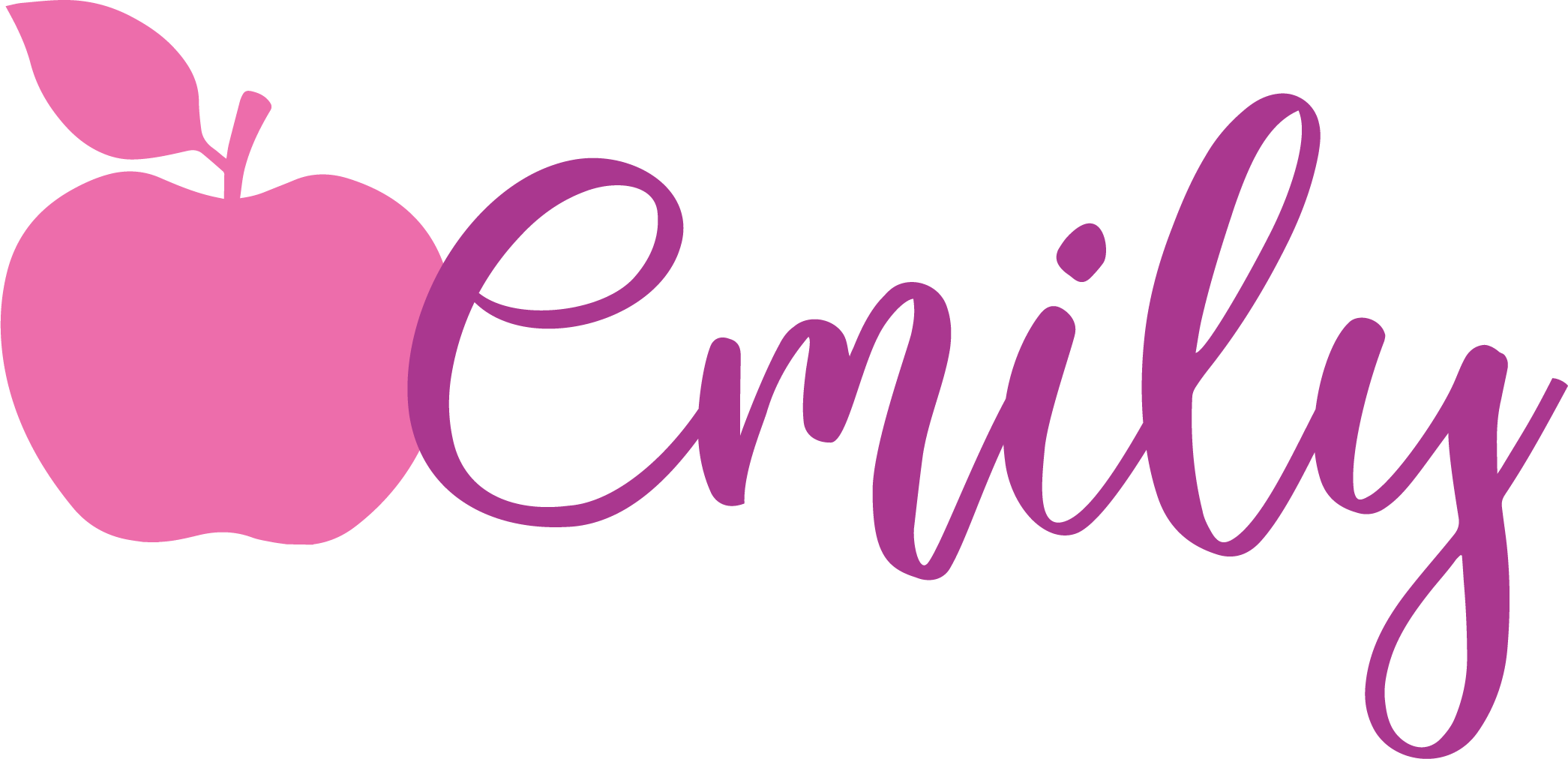5 Tips for Teaching Math Word Problems
Learn 5 tips for teaching math word problems.
I witnessed many of my students struggle with math word problems. I felt horrible because I felt like I was failing them. I tried having my students circle the “important numbers” but, then they would simply add or subtract without even thinking about the word problem. I tried teaching with key words, but then I realized sometimes those key words didn’t always work the right way.
Finally, a few years in to teaching I attended a two day professional development training on math word problems and my life was forever changed. Well, maybe not my entire life, but my teaching life definitely did! I had no idea there were so many different types of word problems beyond the traditional ones I was use to. Not only did I learn about all the different types of word problems, but also all the different strategies to solve math word problems. It is so important students are exposed to word problems as often as possible. I want to share with you 5 things I do in my classroom every day to
#1 Expose Students to Different Types of Word Problems
Different types of word problems? Woah! This was new to me when I first heard this. I had no idea there were so many different types of math word problems.
There are times during the year, especially at the beginning of the year, where I teach with numberless word problems. I give students word problems with blank spaces. We talk about the problem and identify whether the problem is joining, separating, comparing, or part part whole. We talk about what we know and what we don’t know about the problem. What we don’t know is the unknown and is what we are trying to solve for.
I love to create a chart, like the one above, with my class when we are talking about the types of math word problems. I put my students in groups and I hand each group a numberless math word problem. Within their group they discuss what type of math word problem it is and place it on our chart. Once all the word problems are on our chart we compare the problems and find the relationships among them.
#2 Word Problem Journals
My students each have a math word problem journal. My students use this journal every day during our daily math rotations. Problem solving is one of the four stations my students rotate to . The word problem journals are stored in their desk. When it is time to go to the problem solving station, they get out their journal and take it the table designated for problem solving during math stations.
The first thing my students do is glue their word problem on a journal page in the top left box. The word problem journal has other boxes as well. The boxes provide space for my students to show their thinking and mathematical process. There is also a box for students to write their equation and final answer.
The journal was a great way to document their mathematical process. I was able to see how their thinking process and strategies changed throughout the year.
#3 Differentiate Math Word Problems
Differentiating word problems does not need to be complicated. I do not write a different word problem for every student! I simply adjust the numbers according to student needs. This is one of the MANY benefits of using numberless math word problems! It allows the students to focus on the math word problem, rather than getting hung up on the numbers.
The picture below shows an example on how I differentiated. This picture was taken at the beginning of the year, so the numbers weren’t too different. As the year progressed I was able to differentiate with larger numbers.
I found the easiest way to store the differentiated word problems were by putting them in different containers and listing student names under. Students would grab the word problem above their name. This allowed me to change students often without too much confusion.
#4 Math Word Problem Strategies
I use to teach my students the CUBES problem solving strategy. CUBES stands for…
C-circle important numbers U- underline the question B-box the key words E-eliminate the extra information S-solve and check
It worked for some students, but I felt the majority of my students would do these things and still be lost. I’m not a fan of teaching kids “key words” either, so I found this strategy to be not as successful.
I started using UPS Check with my students and I found much more success with this! UPS Check stands for…
U - understand the problem and think P- plan and select a strategy S- solve and show all work and CHECK - to make sure the answer makes sense.
This strategy encouraged my students to visualize the problem and think about the mathematical process, rather than looking for numbers and key words. UPS Check allowed my students to process the information in a way that made sense to them.
I provide my students with strategy bookmarks to help them remember the important steps to process a math word problem.
#5 Provide Time for Discussion
One of the main reasons I allow my students to work in groups during their word problem station is for the discussions! Student discussion is so powerful! I teach my students how to “turn and talk” and how to have meaningful conversations. Students will orally explain their thinking and process to their partner. My students each have a math partner in their group and this is the person they usually turn and talk to. This is also a time they will share their strategy or method they used to solve the math word problem. It is great to see students compare strategies!
Incorporating daily math problem solving into my classroom is not something that happened over night! It could not have happened without the structure of our daily math rotations. We spend WEEKS going over expectations. We practice, practice, and practice again until students can demonstrate all expectations.
If you would like to learn more about our daily math rotations, you can read the blog post HERE. You can also grab all the materials I use to set up our guided math rotations HERE.
You can purchase the journals and all 150 numberless math word problems in my teachers pay teachers store, HERE.
Thank you for reading and I hope you were able to find some helpful tips to implement math word problems into your classroom!
Happy Teaching!







